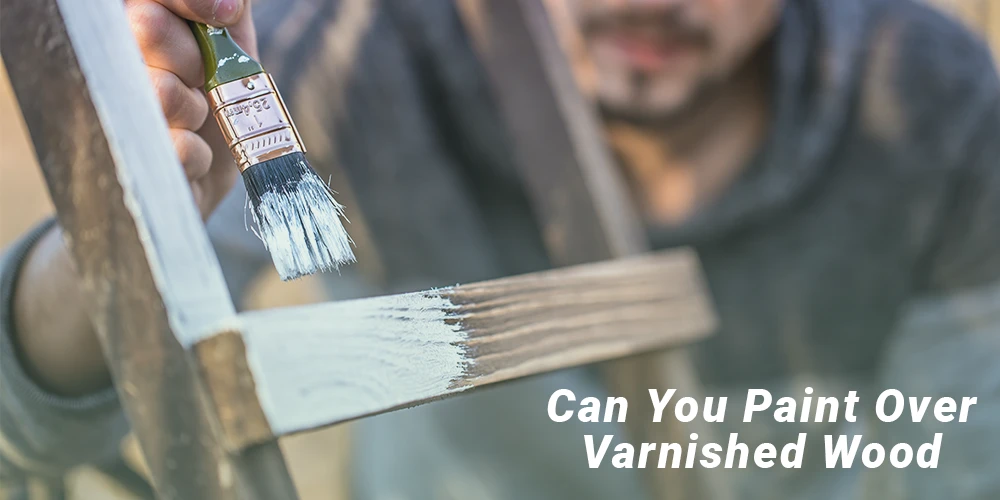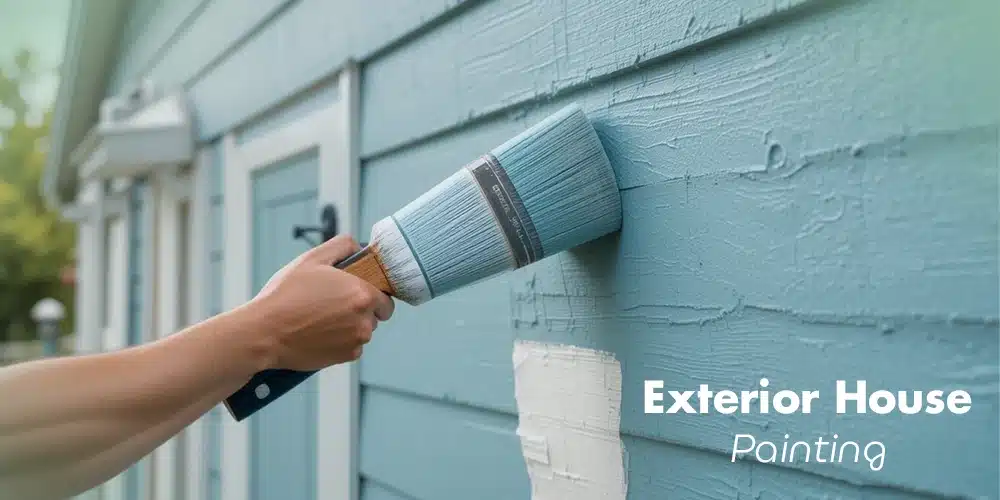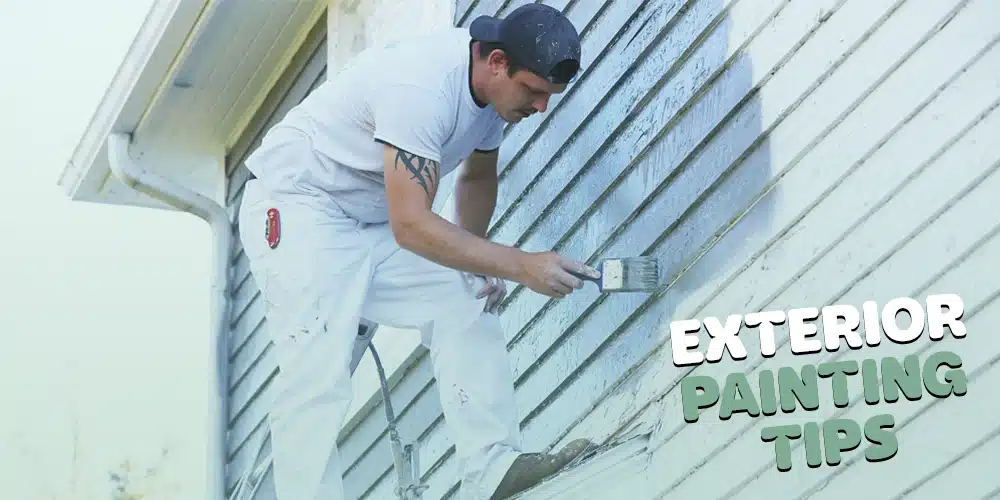“Can I paint over varnished wood?” The good news is, yes, you can! But, it is not as simple as applying a coat of paint. Varnished wood has a smooth, glossy surface that can prevent paint from adhering properly, leading to peeling or uneven coverage. To achieve a long-lasting, professional-looking finish, proper preparation is must.
Here, we’ll go through the necessary steps and tips to successfully paint over varnished wood and transform your surfaces with ease.
How to Paint Varnished Wood
You can paint over varnished wood and it requires a bit of preparation to ensure the paint adheres properly and looks great. Here are the steps to properly paint over varnished wood.
1. Clean the Surface
Before you start painting, the first step is to clean the varnished wood. Dust, dirt, and grease can affect the paint’s adhesion. Use a mild soap and water solution to clean the surface. Dry the wood thoroughly before moving on to the next step.
2. Sand the Wood
Sanding the varnished surface is crucial. The varnish creates a smooth, shiny finish that prevents paint from sticking properly. Use medium-grit sandpaper (around 120 to 150 grit) to roughen up the surface. Sand until the wood feels slightly rough to the touch. Be sure to wipe away any dust with a clean cloth after sanding.
3. Apply a Deglosser (Optional)
If you prefer not to sand, you can use a deglosser. This product is designed to remove the glossy finish of varnished wood without sanding. Apply it with a cloth, following the manufacturer’s instructions. It’s a faster, less messy option for those who want to skip the sanding process.
4. Prime the Wood
Priming is an essential step when painting over varnished wood. Use a high-quality bonding primer designed for glossy surfaces. The primer helps the paint adhere better and provides a smoother finish. Apply one or two thin coats, allowing each coat to dry before applying the next. Must see: Key Differences Between Paint vs Primer
5. Choose the Right Paint
When it comes to painting over varnished wood, the type of paint you choose matters. Oil-based paints are a good option for wood surfaces, as they provide a durable finish. You can also use high-quality latex paints designed for wood. Make sure the paint you choose is suitable for the type of wood you’re working with.
6. Apply the Paint
Once your primer is dry, it’s time to apply the paint. Use a high-quality brush or roller to apply an even coat. Start with a thin layer and allow it to dry before applying a second coat. For best results, apply two to three coats of paint, especially if you’re making a drastic color change.
7. Finish with a Top Coat
After the paint has dried completely, finish off with a clear topcoat to protect the paint. This is especially important for high-traffic areas or furniture that will get a lot of use. A polyurethane topcoat will give the paint a durable, smooth finish. Read more: How Long Does It Take for Paint to Dry & Cure?
What is Varnished Wood?
Varnished wood refers to wood that has been coated with a varnish, which is a clear, hard, protective finish or film. Varnish is typically made from a mixture of resins, solvents, and drying oils, and it is applied to the wood to enhance its appearance, protect it from moisture, dirt, and wear, and provide a glossy or satin finish.
The varnish hardens over time, forming a protective layer that helps preserve the wood while also enhancing the natural grain and color of the wood. Varnished wood is commonly used for furniture, flooring, and decorative items where durability and a smooth, polished look are desired.
What kind of paint to use over varnished wood?
It is important to choose the right type of paint for the best results. Here are the two main options:
- Oil-Based Paint
Oil-based paints are a great choice for varnished wood because they provide a durable, smooth finish. They adhere well to glossy surfaces like varnish and offer a long-lasting, hard finish. However, they take longer to dry and have a stronger odor, so proper ventilation is important.
- Latex (Water-Based) Paint
Latex paints are also a good option for varnished wood, especially if you prefer quicker drying times and less odor. Look for high-quality, specially formulated latex paints that are designed for wood surfaces. They may require a good primer to ensure strong adhesion and durability.
For both options, always use a high-quality primer designed for glossy surfaces like varnish. This will help the paint bond properly and provide a smoother finish.
Can You Remove Varnish Without Sanding?
Yes, you can remove varnish without sanding. There are several effective methods to strip varnish without the need for sanding, which can be time-consuming and messy. Here are a few options:
1. Chemical Strippers
Chemical varnish removers are one of the most common methods for removing varnish without sanding. These products are designed to break down the varnish, allowing it to be scraped off easily. Apply the stripper according to the manufacturer’s instructions, usually by brushing it onto the surface and allowing it to sit for a set period of time before scraping off the varnish.
2. Heat Gun
A heat gun is another tool that can be used to remove varnish without sanding. The heat softens the varnish, making it easier to scrape off. This method is particularly effective on flat, even surfaces. Be cautious with the heat settings to avoid damaging the wood beneath.
3. Vinegar and Water Solution
For a more natural approach, a mixture of vinegar and water can help remove varnish. Soak a cloth in the solution and apply it to the surface for a few minutes. The acidity of the vinegar helps to break down the varnish, after which it can be wiped away or gently scraped.
Always follow the safety precautions for the method you choose, especially when using chemical strippers or heat guns.
How to determine if your wood is varnished?
To check if your wood is varnished, try a simple test. Dip a cotton swab in acetone and rub it on the wood’s surface. If the finish becomes sticky or tacky, the wood is varnished. This quick test helps you identify the finish, so you can choose the right preparation method for painting.
FAQs
What type of primer should I use on varnished wood?
You should use a bonding primer designed for glossy surfaces like varnish. This will help the paint adhere properly and create a strong foundation.
How long should I wait between coats of paint?
Allow each coat of paint to dry completely before applying the next. Drying time depends on the type of paint used, but generally, it’s best to wait 4-6 hours between coats.
Is it necessary to remove all the varnish before painting?
No, it’s not necessary to completely strip the varnish, as sanding and priming are enough to prepare the surface for painting. However, if the varnish is damaged or peeling, it’s a good idea to remove it entirely.
How do I know if the varnish is still good to paint over?
If the varnish is intact and smooth, it can generally be painted over after proper preparation. If the varnish is cracked or peeling, it may be necessary to remove it completely for a better finish.
How long will the paint last on varnished wood?
With proper preparation and quality paint, the finish can last for many years. Applying a protective topcoat will further extend the life of the paint.
Can I paint over varnished wood without a primer?
It is not recommended. A primer designed for glossy surfaces ensures the paint adheres well and prevents peeling or flaking over time.
Is there a specific type of sandpaper I should use for varnished wood?
Use medium-grit sandpaper (120-150 grit) to scuff the varnished surface without damaging the wood. Follow up with a finer grit if needed for a smoother finish.
Can I paint over varnished wood outdoors?
Yes, you can paint varnished wood outdoors, but be sure to use outdoor-rated paint and primer designed for exterior use. Weatherproofing products will ensure the paint stands up to the elements.
What should I do if the paint peels after painting over varnished wood?
If the paint peels, it’s likely because the surface wasn’t properly prepped. In this case, you may need to remove the peeling paint, resand the surface, apply a fresh primer, and repaint.
Do I need to use a specific type of sealer for varnished wood?
A polyurethane sealer is a great choice for varnished wood as it provides a durable, long-lasting finish. Be sure to choose a sealer that matches your desired paint finish (matte, satin, or glossy).
Transform Your Home with Local Experts
At Aaron’s Painting and Remodeling, we are providing high-quality, reliable local painting and remodeling services. When you choose Aaron’s Painting and Remodeling, you’re partnering with a team that truly understands your needs and is committed to transforming your home. With over two decades of experience, APR has successfully completed thousands of home remodeling projects across the Kansas City Metro area. Contact us today to start your next remodeling project with the local experts!



